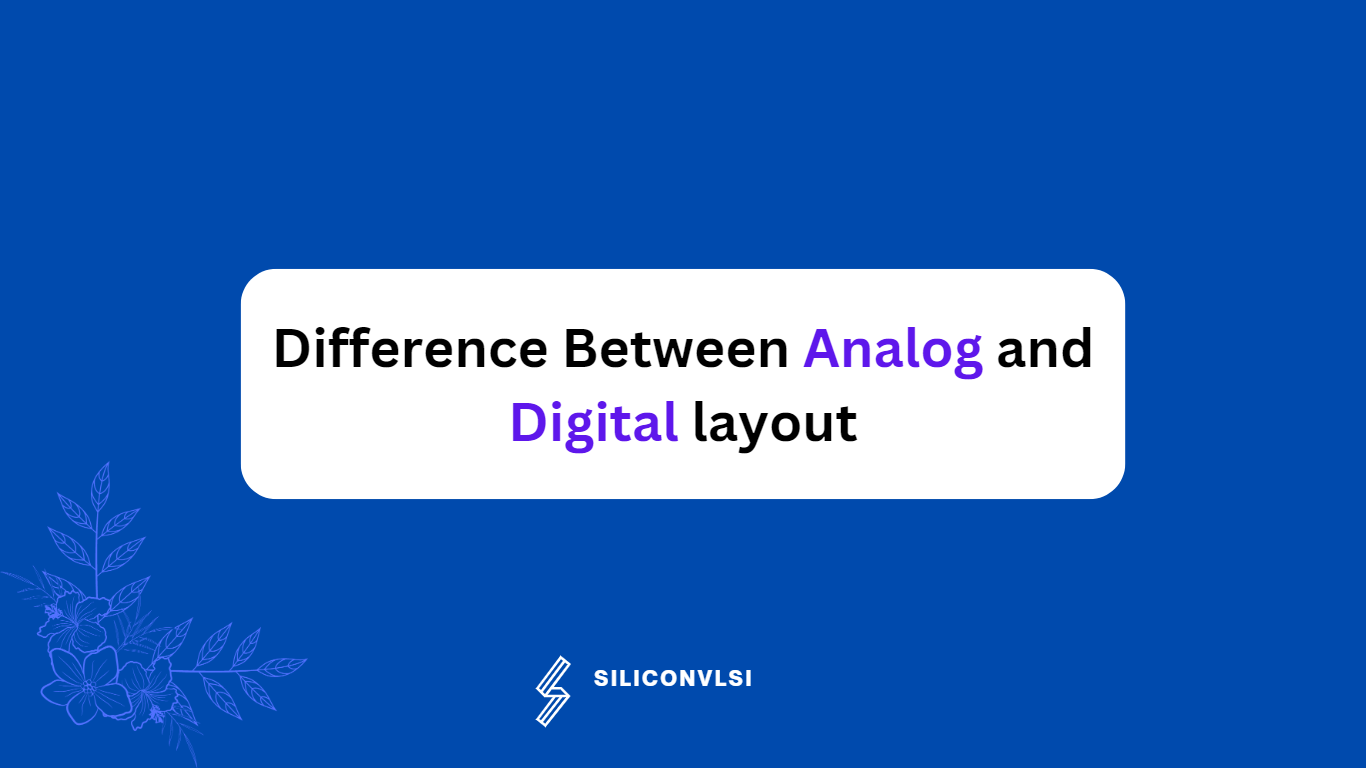Difference between Analog and Digital layout

- Analog Layout needs matching while digital layout doesn’t need matching
- Analog layout needs guarding to avoid latch-up while digital layout needs only tap cells.
- Analog circuits are mostly custom-made and lack flexibility. Digital circuits have a high degree of flexibility.
- Analog signals contain intelligence in amplitude, phase, and frequency. Digital signals contain intelligence in the pulse edges.
- Analog layout design engineers work on analog integrated circuits such as amplifiers. Digital layout design engineers work in designing digital integrated circuits such as logic gates.
- Analog circuits operate on continuously variable signals also known as Analog Signals. Digital Circuits operate on discretely variable signals or Digital signals i.e. the signal exists only in two levels: 0 and 1.
What is the difference between analog layout and physical design?
The term “physical design” is a broad term used to describe the back-end design phase of integrated circuits. It encompasses various aspects of layout design, including analog, digital, or mixed-signal layouts. On the other hand, “analog layout design” is a more specific term referring to the back-end design of analog circuits such as ADCs, DACs, op-amps, and other analog components.